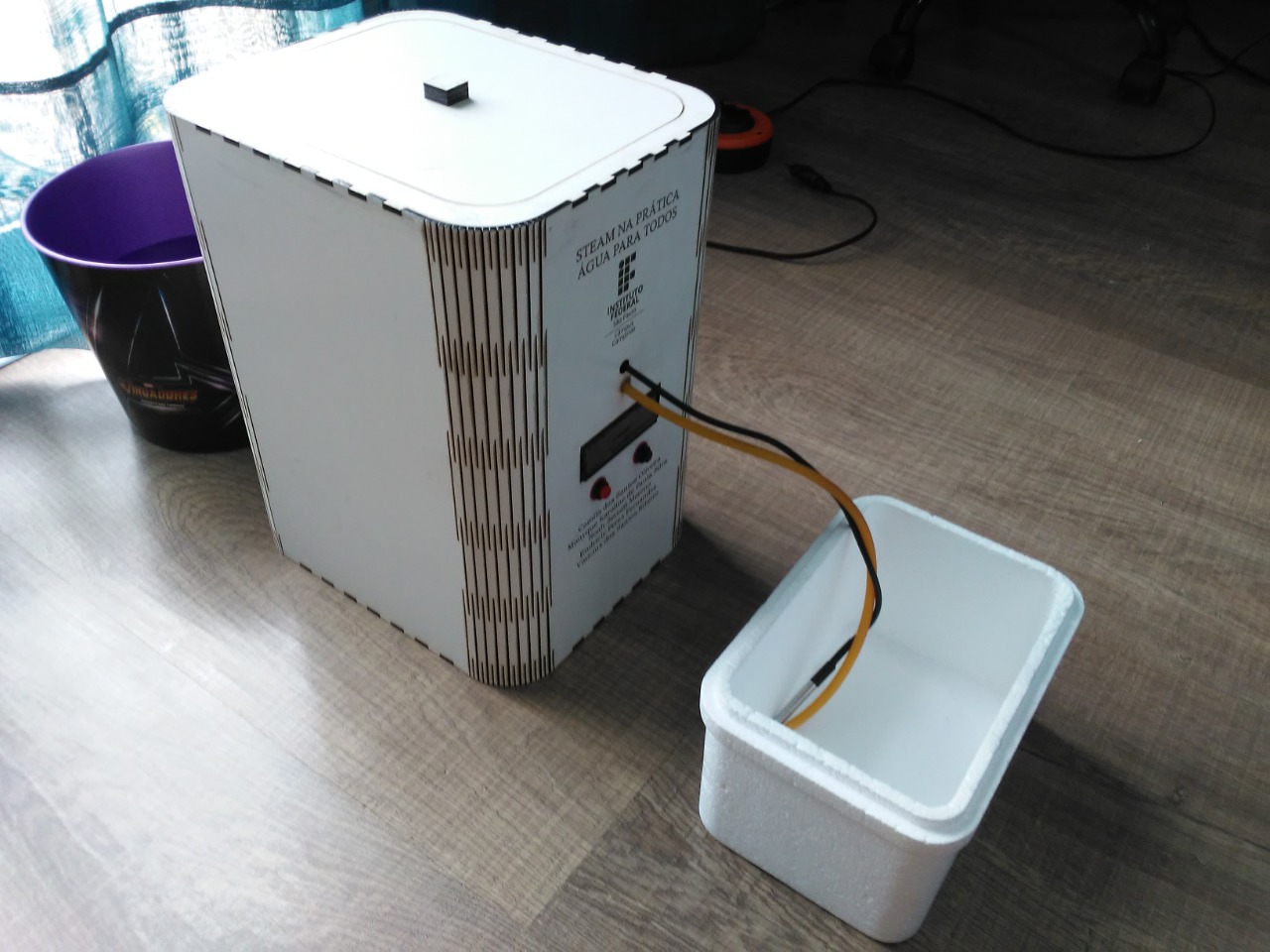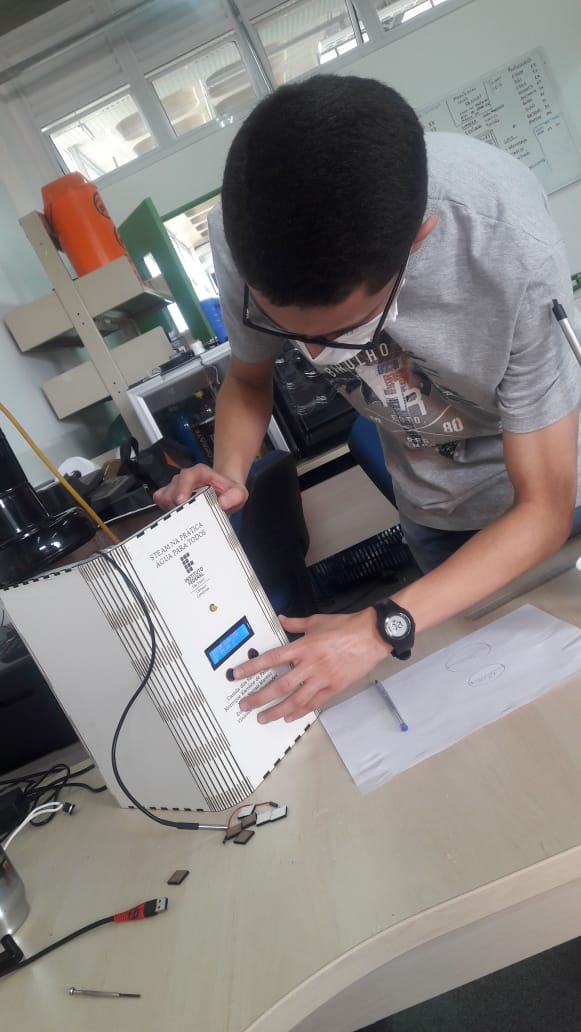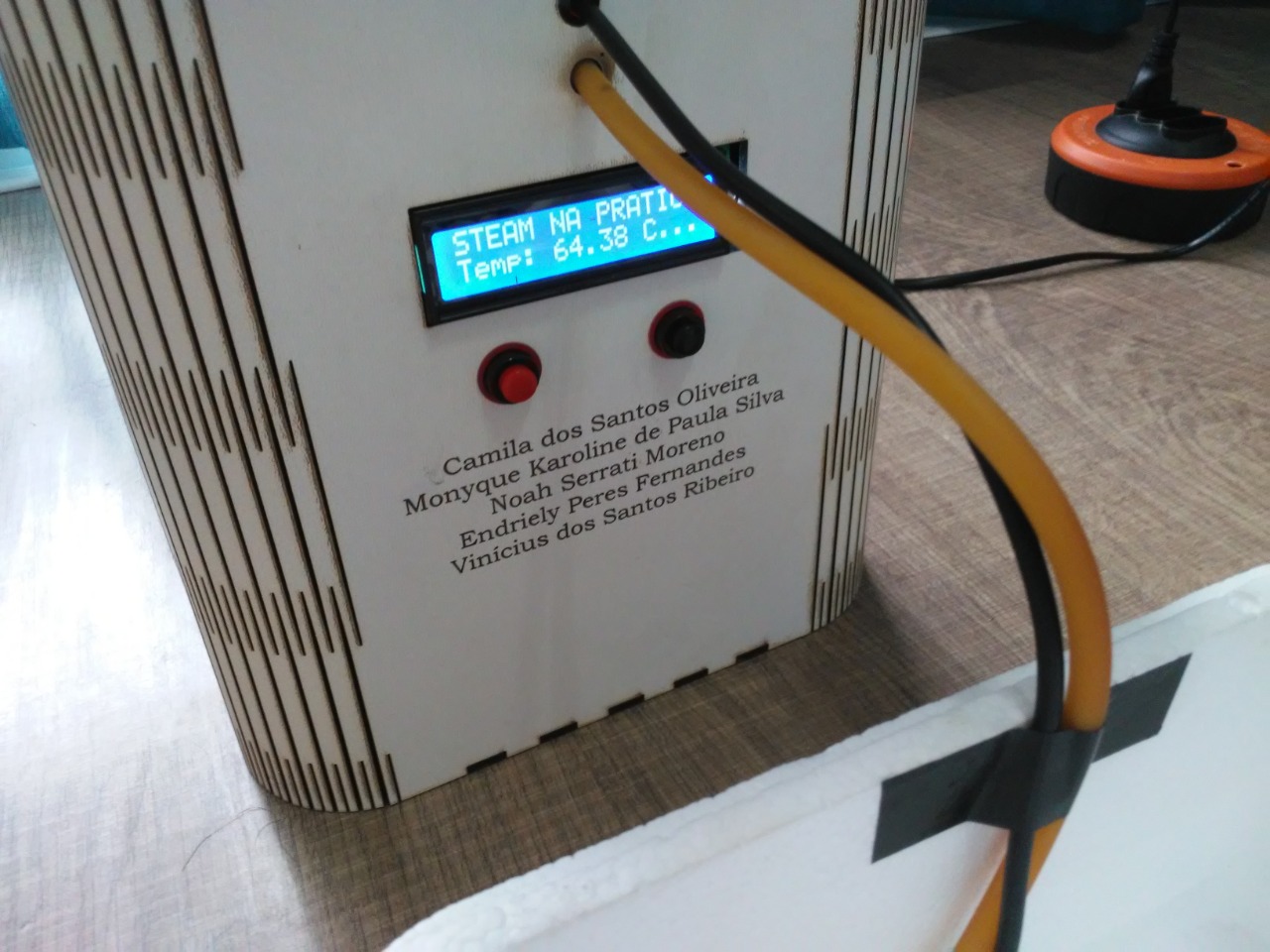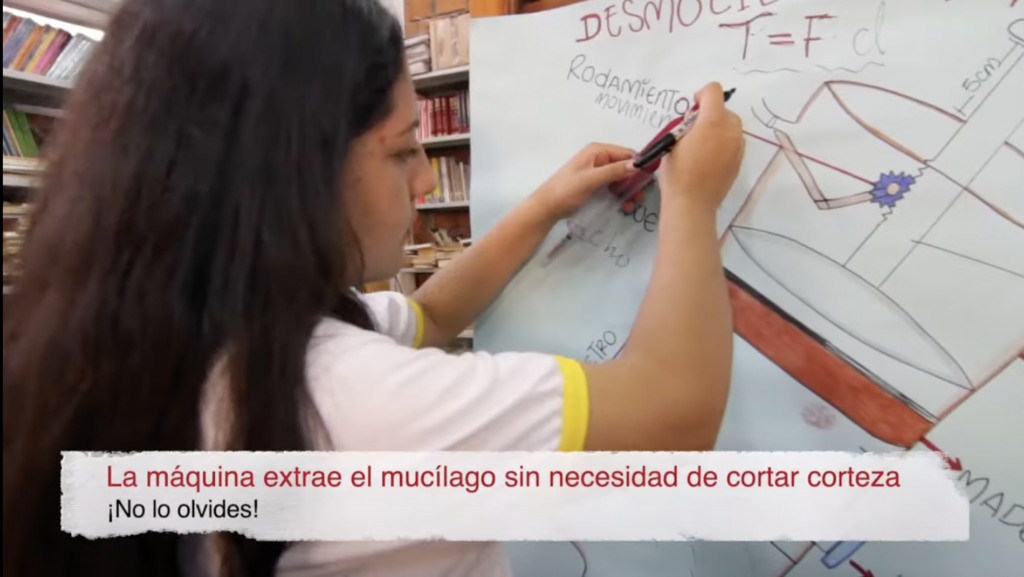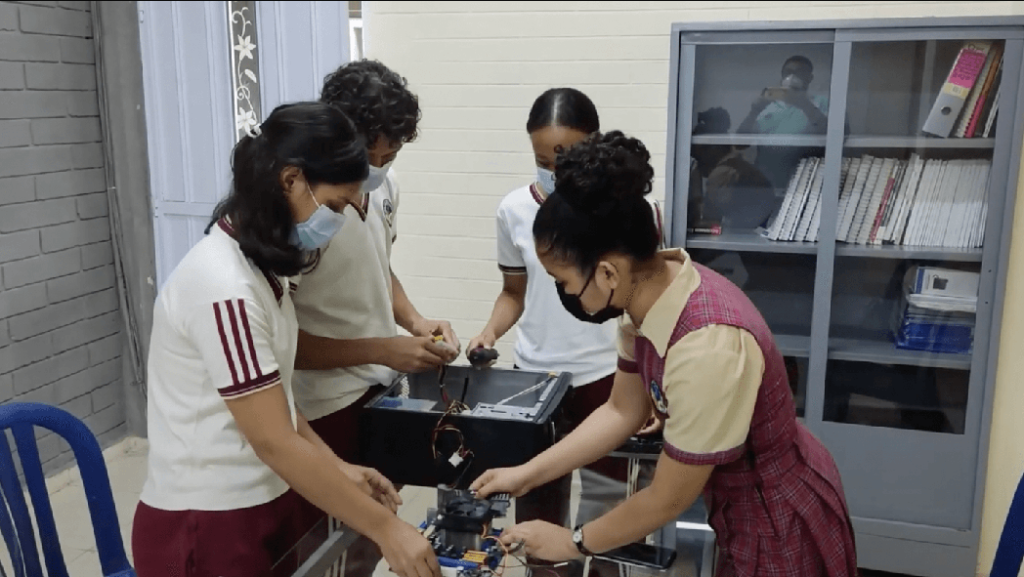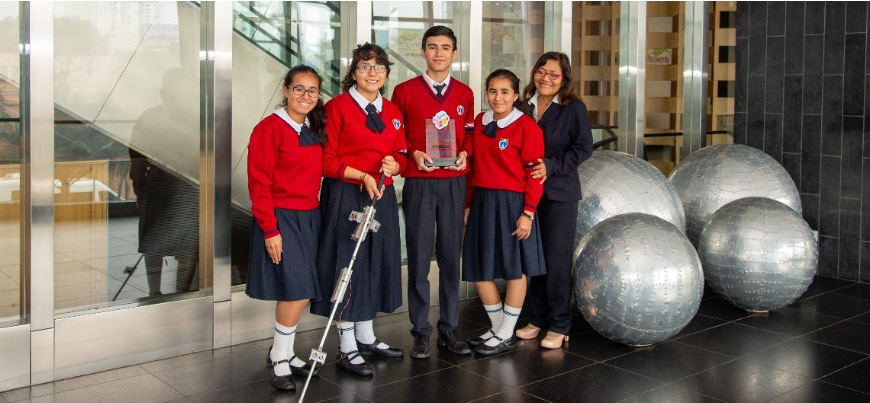Project gallery

STEM in practice: clean water for everyone
Report sent by the Teacher
Edson Anício DuarteSchool
IFSP - CAMPINAS Campinas, São Paulo, BrazilProject team composition
Camila dos Santos Oliveira, Endriely Peres Fernandes, Monyque Karoline de Paula Silva, Noah Serrati Moreno, Vinícius dos Santos Ribeiro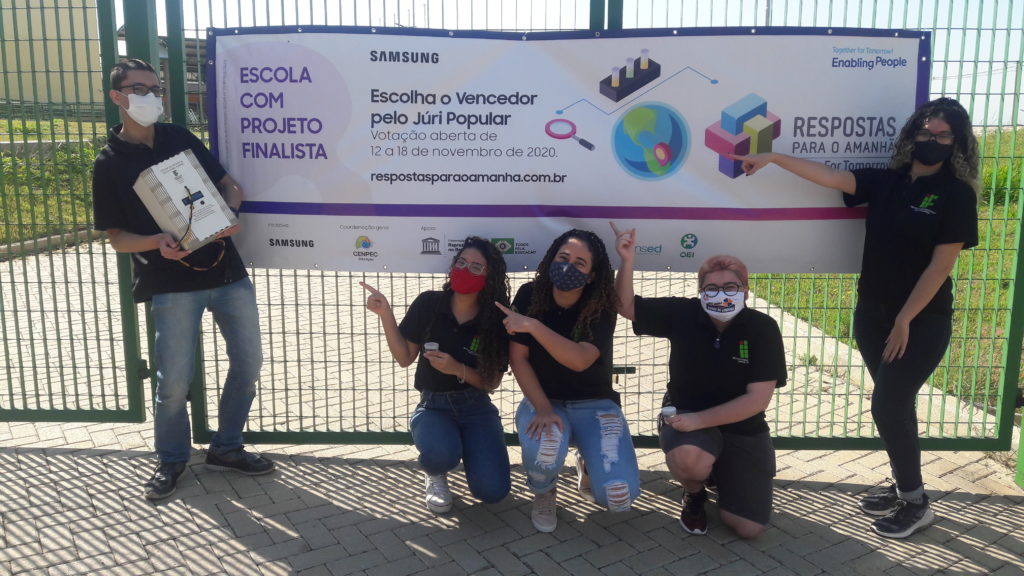
Age of students
15 to 17 years old, 18 to 20 years oldOther areas of knowledge
Geography, Social Sciences or SociologyProject duration
One semesterSoft skills
STEM areas
Engineering, Math, Sciences, TechnologyEmpathy: learning from people’s values and needs
Project objective, problem to be solved, and main actions
The main objective of the project was to develop a water treatment system stored in cisterns using a hybrid electronically controlled water heating system.
The use of cisterns to collect and store rainwater is a reality in almost every country in the world. In Brazil, the presence of cisterns can be evidenced by the P1MC program. Studies point to the presence of microbiological contaminants in this stored water that are a potential risk to the health of people who consume it. Access to clean water is still one of the main causes of public health problems and school absenteeism. In several regions of the country, water for human consumption is stored in cisterns. Thus, the proposal is to have a system that performs the treatment and makes it suitable for human consumption.
The students participated in a marathon of challenges at a science fair FBJC, and it was when the group got to know the “AquaLuz” project. The equipment consisted of a water potabilization system that used solar radiation to disinfect water for human consumption in the rural semiarid region.
Although the device worked well, it had problems such as the amount of water treated per cycle and the difficulty of making it clean during periods with little sunlight. Given the difficulties presented, the problem of lack of potable water in the rural region of the Northeast and the dropout rate in schools in this region, the team proposed STEAM in practice: treated water for all, which is a device of a social nature similar to the project presented . However, this new equipment will have a superior potabilization capacity to implement it beyond residences; that is, in schools in the region. In addition, it will have a hybrid heating system – it will be able to run on electricity or energy from burning coal. The project brings a proposal following the UN SDGs, specifically objectives 4 and 6. In addition, the prototype will monitor water purification data in the cloud, fitting into an IoT proposal.
The initiative was the student´s idea, who then came to me. At school, we work with integrative projects, where we look for real demands and so we encourage students to look around them, looking for problems and solutions. In this way, students bring to the classroom proposals where teachers along with them look for solutions to these problems. At the beginning of the year, we always present the proposal to the students on how the discipline will be conducted.
Definition: better understanding of the challenges
Deepening into the issue and involvement of the school and local community
With the results of previous years and the dissemination of results to the school community, parents and students very much accept the proposal of mobilizing students in the development of projects, which in large part is an introduction to Scientific Initiation.
When the students decided to start the project, the research phases began, which is properly the scientific initiation, better identifying the problem, its scope, and possible solutions for water treatment. The engineering methodology was used, where after identifying the problem, a technical solution is proposed.
The research was conducted on sites such as ASA Brasil – responsible for the P1MC program (Project one million cisterns), verifying the dimension of the proposal, the scope of the solution, and which locations could benefit. With the problem defined, it was discussed what would be the best technique for developing the solution, and the thermal process was chosen for the treatment of water.
For water heating, two ways were proposed: one with electrical resistance and the other with coal burning, thus achieving a greater scope of application, since in some regions of the country there is no electrification.
An Organization Chart was prepared to define the functions of each member and a Schedule to list activities and deadlines. With the block diagram, it was possible to verify how each component is interconnected. The electrical schematic, programming, process flowchart, and prototype assembly were developed.
Tests of the prototype and analysis of the results began. With the improvements implemented in the prototype, the validation phase began.
It is expected to be able to treat water stored in cisterns, water from wells and weirs, for example. As additional features, we can use this IoT device to monitor the volumes of treated water and data storage in the cloud, since there is already a microcontroller and this device has this processing capacity.
Ideation: developing creative solutions
The development of the solution
This is a STEAM project, in which it was necessary to deepen the theoretical concepts of some curricular components of Natural and Exact Sciences; all integrated with the area of the electronics course since this project has the differential of automation that guarantees the efficiency of the potabilization process.
In an integrated way, the following curricular components that are part of our curriculum were worked on: Integrating Project, Electronic Automation, Analog, and Digital Electronics, Physics, Chemistry, Biology, Mathematics, and Portuguese.
The following areas of knowledge were listed:
- Biology: Study of microbiology and study of criteria for potability of water. Analysis of the parameters that guarantee the potability of the water (extra);
- Physics: Study of thermometry and heat transfer with water heating – specific and latent heat, the study of unit conversion units. Calculation of the energy needed to heat water. Calculate the Joule and Calorie equivalent. Calculation of electrical power and electrical energy consumed.
- Arts: External prototype design;
- Mathematics: Calculation in spreadsheets for equipment sizing;
- Electronics: Automation and prototype development. Algorithm development to control actuators and data storage in the cloud;
- Chemistry: Study of the calorific value of coal and firewood. Integration of the discipline with the Physics discipline;
- Portuguese Language: Text development and technical writing.
- Integrating Project: In the structuring of the project with the use of time management tools, resources, and project risk, simulation, and prototyping of the project.
Prototype: making ideas tangible
The construction of the prototype
We finished the prototype and it is operational. Field implementation was not conducted.
Test: putting ideas out into the world
Evaluation of the process and the developed solution
The evaluations were necessary to have quality control of the project. A practice that we used was the weekly meetings with the validation of the items to be presented by the group and analysis of the improvements to be implemented in the project. This dynamic favors the progress of the project and the group acquires autonomy.
Reflections and pedagogical practices
The value of participating in Samsung Solve for Tomorrow
This process shows students that studying is important and that they are capable of producing benefits for society. At this stage of these young people’s lives, they must have positive feedback and believe in their potential.
Achievements and advances perceived by the teacher, throughout the process
The autonomy and self-confidence of the students was a great gain.
Challenges faced
Due to the pandemic, the main challenges were face-to-face meetings to conduct the assembly of the prototype, as several validation tests and the purchase of materials were necessary. Purchasing consumables at school was a challenge since there are no parts available for this purpose. The solution found was the use of recyclable materials and the purchase of parts by the group members. Group work is an important exercise and training for students and this type of project is an example of how group work brings synergy to the conclusion of the project and reinforces, once again, that due to the good pandemic part of the work for the assembly of the prototype suffered delays and we in the group were not able to experience this synergy in the construction of this project that excites all of us. The group also found some ways to develop the prototype, which were video calls and the possibility of focusing more on building this project even remotely.
Learning incorporated into the teacher’s routine and practice
To learn that is worth the effort at Solve for Tomorrow because this year I see increased students committed to developing solutions and wanting to participate in Solve for Tomorrow and other fairs; this is the energy for our teaching practice.
